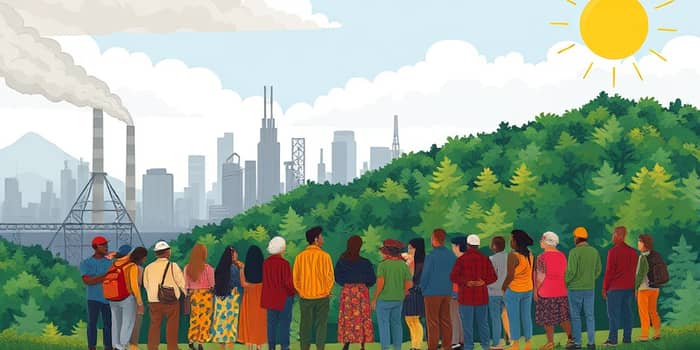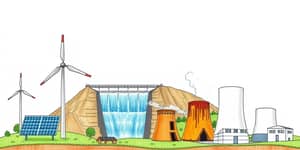Environmental justice is a movement and principle ensuring the fair and meaningful involvement of all individuals—regardless of background—in environmental decision-making. It champions a world where no group endures disproportionate environmental burdens on communities, and where every person enjoys access to clean air, water, and land. This article dives into the origins, principles, challenges, and personal relevance of environmental justice.
By understanding the history and core tenets, we can appreciate why environmental justice matters not only to vulnerable populations but to every member of society. Through practical guidance and inspiring narratives, you’ll be equipped to contribute to a more equitable and sustainable future.
Definition and Core Principles
The concept of environmental justice emerged at the First National People of Color Environmental Leadership Summit in 1991. It rests on key pillars: the right to ethical balanced and responsible use of land and resources; protection from environmental hazards like toxic wastes and pollutants; full participation in environmental policymaking; and the self-determination of all communities. Accountability and reparations for those harmed by ecological neglect are also central.
Broadly, environmental justice connects the sanctity of nature with human rights, supports Indigenous sovereignty, and opposes environmental racism and exploitative corporate practices. Its principles have guided policy reforms and grassroots activism across the globe.
Historical Milestones
One of the earliest and most influential events was the 1982 protests in Warren County, North Carolina. Residents, predominantly low-income and Black, rallied against the dumping of PCB-laden soil in their community. Although the waste was ultimately buried, the protests sparked nationwide awareness and laid the foundation for the environmental justice movement.
Subsequent cases, such as Flint, Michigan’s water crisis and the toxic exposures along Louisiana’s “Cancer Alley,” highlighted the ongoing struggle. In Flint, over 100,000 residents faced lead-contaminated water, while in Cancer Alley, decades of petrochemical pollution have led to elevated cancer rates among residents. These stories underscore how systemic factors can harm vulnerable populations.
In response to these milestones, the U.S. Environmental Protection Agency (EPA) launched its environmental justice program in 1994, marking a shift toward formal recognition. Courts, legislatures, and advocacy groups have since shaped regulations requiring impact assessments and community consultations. While progress is uneven, these legal developments have empowered communities and inspired global frameworks.
Causes of Environmental Injustice
- Misguided regulatory policies
- Discriminatory siting of polluting facilities
- Unequal enforcement of regulations
- Unequal political and economic power
At the heart of environmental injustice are policy failures and inequitable power structures. Communities with less influence often find themselves at the receiving end of hazardous operations, illustrating a pattern of environmental racism that persists today.
Rights and Protections Under Environmental Justice
- Right to clean air, water, land, and food
- Right to participate in policymaking
- Right to safe workplaces and homes
- Right to compensation and healthcare for harm
These rights seek to empower affected communities and ensure governments and corporations are held accountable. When properly upheld, they foster trust and encourage collaborative problem-solving between residents and decision-makers.
Modern Challenges and Intersections
Today’s environmental justice efforts address a broader spectrum of issues, including climate change’s disproportionate impacts on marginalized groups. Extreme weather events, rising sea levels, and resource scarcity amplify existing inequalities, demanding inclusive adaptation and mitigation strategies.
Moreover, public health intersects deeply with environmental justice. Studies reveal that communities facing pollution burdens suffer from higher rates of asthma, cancer, and other chronic illnesses, highlighting the need for holistic solutions.
Indigenous communities, for example, face threats to traditional lands by extraction projects that undermine cultural heritage and ecological balance. Partnerships with tribal leadership are promoting restoration projects that honor ancestral knowledge and support sustainable livelihoods.
Corporate accountability is another critical front. Increasingly, companies are adopting environmental justice frameworks to guide operations, implement community benefit agreements, and fund remediation efforts. Yet transparency and enforceability remain challenges that require persistent advocacy.
Why Environmental Justice Matters to You
Environmental harms seldom respect community boundaries. Pollution can travel through air and water, affecting distant populations. By advocating for justice in one region, we protect broader ecosystems and public health.
The economic costs of environmental degradation—medical expenses, lost productivity, and cleanup—ultimately fall on all taxpayers. Upholding equality and sustainability drives down these costs and strengthens social cohesion.
True justice in one neighborhood sends a ripple effect that uplifts entire societies. In addressing systemic inequalities, we honor the interdependence of all life and ensure a more resilient future for coming generations.
Supporting environmental justice fosters innovation, drives green job growth, and builds shared collective climate resilience efforts that benefit us all.
Taking Action for a Just Future
- Educate yourself and your community on local environmental issues
- Reduce personal carbon footprint and waste
- Engage in public meetings and policy discussions
- Support organizations led by affected communities
- Advocate for stronger enforcement and reparations
Individual choices and collective activism go hand in hand. By staying informed, speaking up, and forging partnerships, you amplify the voices demanding change and drive meaningful progress.
The journey toward environmental justice is ongoing. Each step, whether attending a city council meeting or planting native trees, contributes to systemic transformation. Embrace your role as a steward of both human rights and the natural world.
As we confront the twin crises of environmental degradation and social inequality, environmental justice offers a unifying vision: one planet, one humanity, fair treatment for all. Let this shared goal inspire you to act today and every day.
References
- http://www.ewg.org/news-insights/news/17-principles-environmental-justice
- https://bencrump.com/environmental-justice-lawyer/what-are-the-principles-of-environmental-justice/
- https://leadthechange.bard.edu/blog/the-principles-of-environmental-justice
- https://environment.co/environmental-justice/
- https://www.gcu.edu/blog/nursing-healthcare/environmental-justice
- https://uw.pressbooks.pub/climatejusticeandenergysolutions/chapter/principles-of-environmental-justice/










